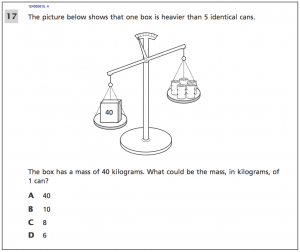(Another set of tips for those who are getting a little desperate for time. Please pass this on to anyone you think might benefit.)
A somewhat crazed-sounding principal in the Bronx recently threw out her teachers’ desks and filing cabinets. She did not want teachers sitting at their desks during class and she solved that problem with one fascinating swoop. Last I heard, the district had reclaimed the desks and they had been stacked in the basement. Check out the pictures.
(http://nypost.com/2015/10/18/principal-forbid-teachers-to-sit-so-she-threw-out-their-desks/)
Overall, I don’t approve. Teachers manage a great deal of paperwork, including classwork, homework, tests, quizzes, data derived from class tests and quizzes, professional development materials, school and district reports, attendance forms, letters, printed mail, printed emails, announcements, future assignments, other teachers’ great ideas, and vital items such as inhalers. I don’t see how a classroom can function efficiently with no teacher desks. Even with filing systems, some days I missed a beat or two, and forgot an assembly reminder or dress code letter that was supposed to go home.
Still, I think that principal might have had something when she threw out the filing cabinets. Efficiency experts estimate that anywhere from 80% to 95% of materials that go into those cabinets never come out. Roach motels should work as well. Papers get lost in filing cabinets, buried in “C” when they should have been in “H.” Failed test forms are put away for reviews that never happen. Possible future lesson materials are buried in piles that surface after their related topic has ended.
This post is for all my readers who are losing papers. It’s also for readers who are regularly digging in and (re)arranging those filing cabinets. How much time do you spend finding or sorting papers? Or worse, rearranging filing cabinet dividers to make your life “easier” and “more manageable.” Here are a few tips to help:
♦ Keep your filing cabinet categories simple. Some possible categories: Tests and quizzes, data (create a separate folder for each class), professional development, parent communications, copies of used assignments for next year, meetings, attendance (if you don’t have or can’t trust your district attendance program), parent-teacher conference night, and IEPs/student needs.
Here’s where the filing process gets tricky. Who are you? Are you the sort of person who rifles through the filing cabinet regularly? If so, you can probably safely add a fair number of additional categories into those metal drawers. But filing cabinets, like purses, tend to be black holes for many people. If you are not a person who peruses filing cabinets, you may want to avoid big, metal boxes. Don’t stuff your great ideas in there. Don’t store reports you need to finish later or announcements that need to go out in the near future. Don’t bury future assignments!
♦ Find shelving that won’t disappear from view.

O.K., I freely admit my blue box from last year looks rather battered and unimpressive now. That box worked great for me, though. I could keep the box by my desk in easy view. I did not store everything there. The finished tests were going into the big metal filing cabinets, for example. I used the blue box for items like make-up assignments and tests (MU) and other papers I might want to grab quickly. I used it for information on the new software program that I could get around to filing later. I used it for temporary storage for impending events, such as parent-teacher night information, and field trip permission trip forms.
♦ I suggest choosing a day each month to stay late for filing. If this task takes more than an hour, you are overthinking your filing or saving too much stuff. If your blue box categories mostly match your filing cabinet categories, you should be able to finish the month’s filing in a few minutes.
♦ I like alphabetizing my filing. Some people prefer color coding. Whatever works best for you, create a system. File papers you expect to use in the next week or two in your handy, blue box. When papers pile up on shelves and counters, teachers sometimes lose necessary papers inside the bigger forest of climbing, white piles. The blue box prevents that.
One caveat: Because this box is easy to get in and out of, you should not store IEP and other confidential materials here.
Eduhonesty: By now, some starting teachers are adding up dollar signs. After all, I just suggested you buy an industrial stapler. If your incidental expenses have begun to feel painful, the right cardboard box will work just fine. You do want a box with a lid, but you could even make that lid. We teachers tend to be naturals at arts and crafts. If not, we keep gluing anyway.
Important note: I just added a caveat to my stapler post from yesterday. Many industrial staplers exist. You want to find a stapler like the one I used and showed in my preceding post. The wrong industrial stapler makes it too easy for Johnny to staple Freddy.







